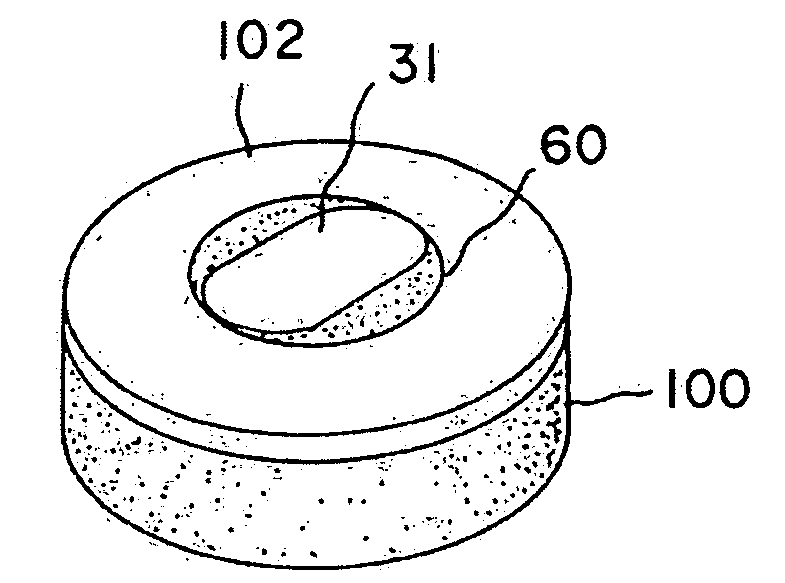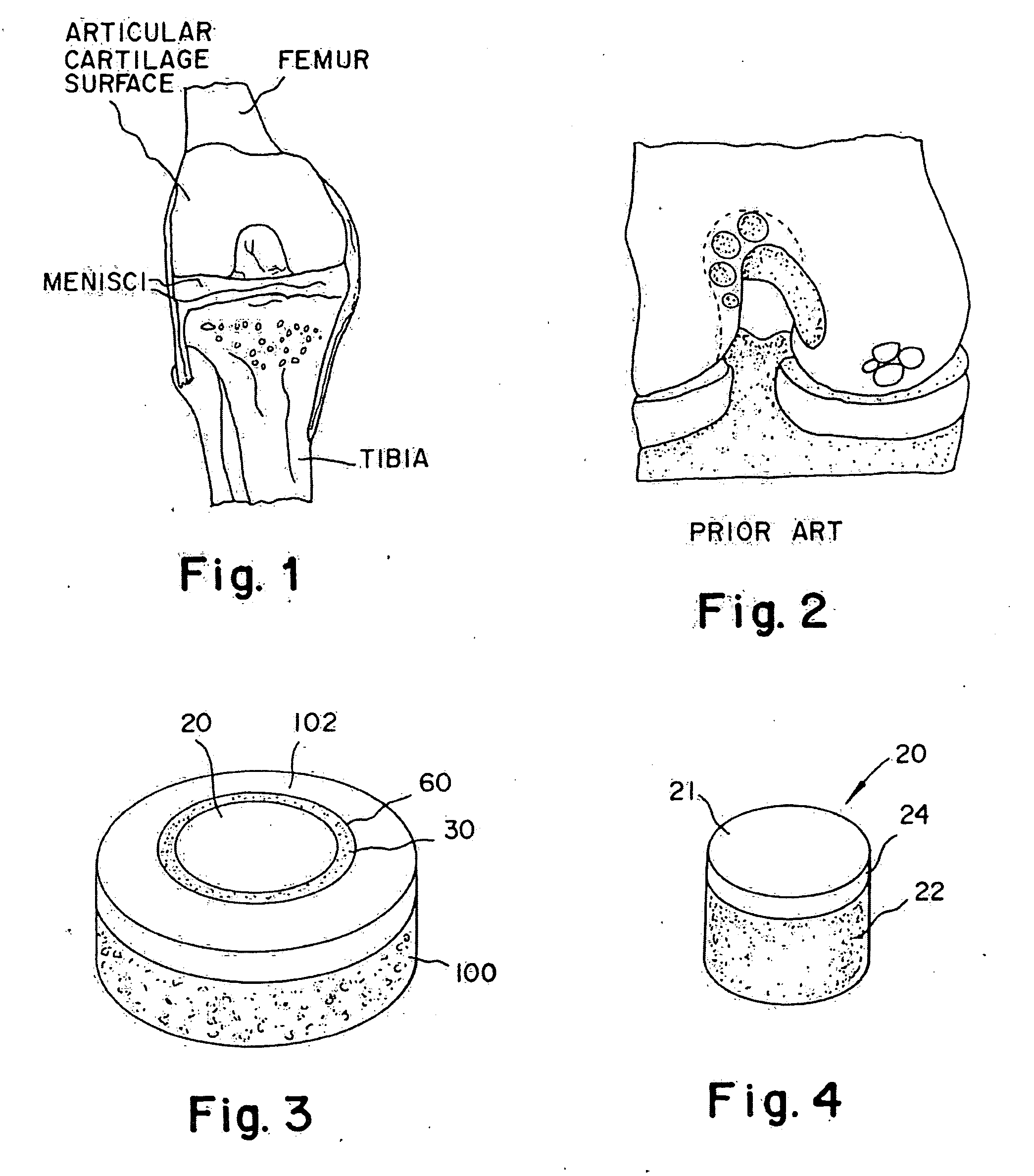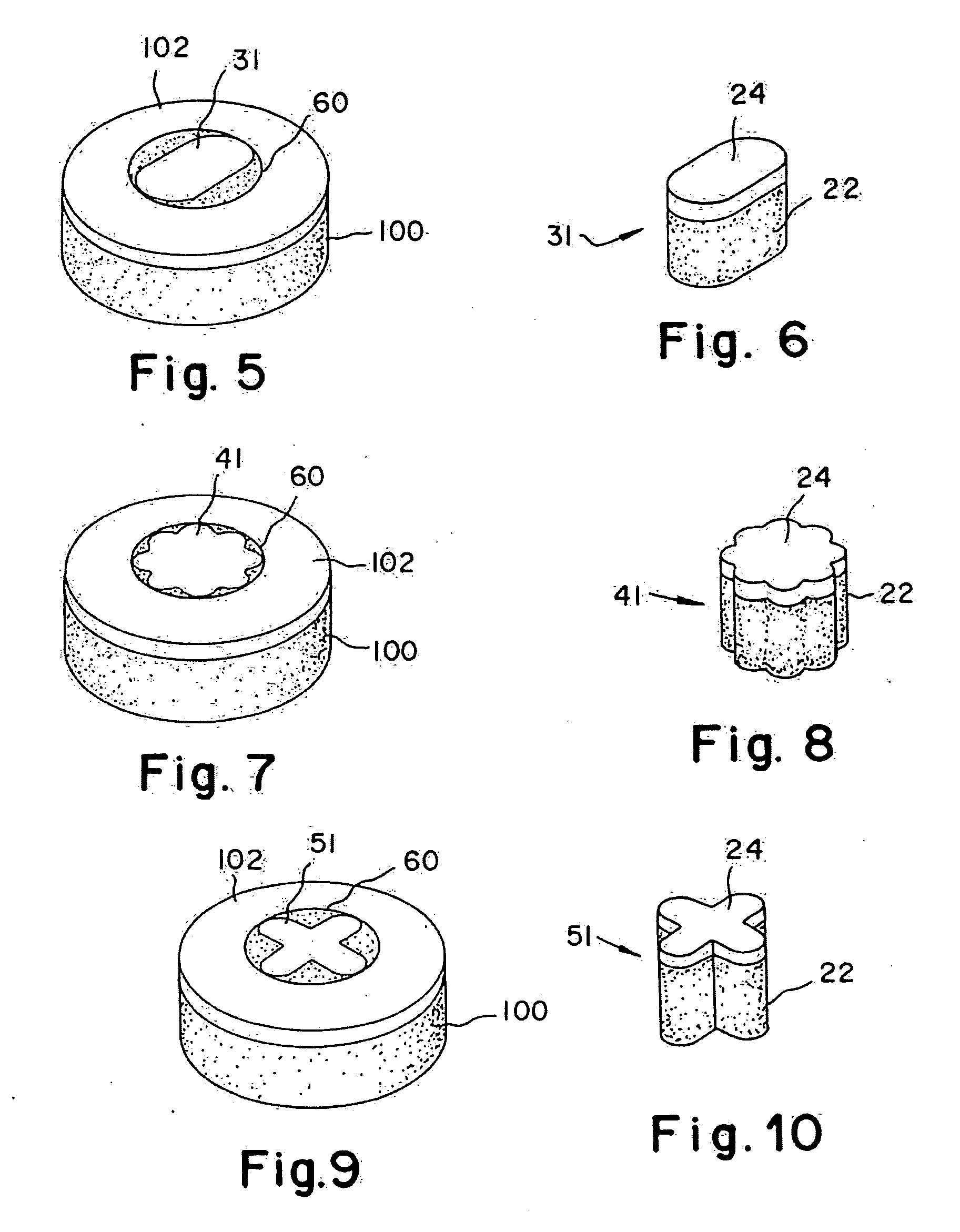Cartilage implant plug with fibrin glue and method for implantation
a cartilage implant and fibrin glue technology, applied in the field of surgical implants, can solve the problems of affecting the healing effect of articular cartilage lesions, affecting the healing effect of hyaline cartilage, and limiting the regeneration of hyaline cartilage, so as to increase the migration and proliferation of chondrocytes
- Summary
- Abstract
- Description
- Claims
- Application Information
AI Technical Summary
Problems solved by technology
Method used
Image
Examples
example 1
[0042]A non-viable or decellularized osteochondral plug consisting of a subchondral bone base and overlying cartilage cap is treated with a solution or variety of solutions to remove the cellular debris as well as the proteoglycans as noted in the treatment described above. It is believed that this removal provides signaling to stimulate the surrounding chondrocytes and also the host's bone marrow and other mesenchymal stem cells to migrate into the graft to proliferate and form new proteoglycans and other factors producing new matrix. The diameter or diagonal of the plug ranges from 1 mm to 30 mm but is preferably 4 mm to 10 mm which is small enough to fit through the endoscopic cannula, but large enough to minimize the number of plugs needed to fill large defects. This size provides good results at the recipient site and provides a more confluent hyaline surface. The thickness of subchondral bone can be modified to match the anatomy of the patient so that the surface cartilage of ...
PUM
| Property | Measurement | Unit |
|---|---|---|
| size | aaaaa | aaaaa |
| particle size | aaaaa | aaaaa |
| molecular weight | aaaaa | aaaaa |
Abstract
Description
Claims
Application Information
 Login to View More
Login to View More - R&D
- Intellectual Property
- Life Sciences
- Materials
- Tech Scout
- Unparalleled Data Quality
- Higher Quality Content
- 60% Fewer Hallucinations
Browse by: Latest US Patents, China's latest patents, Technical Efficacy Thesaurus, Application Domain, Technology Topic, Popular Technical Reports.
© 2025 PatSnap. All rights reserved.Legal|Privacy policy|Modern Slavery Act Transparency Statement|Sitemap|About US| Contact US: help@patsnap.com



